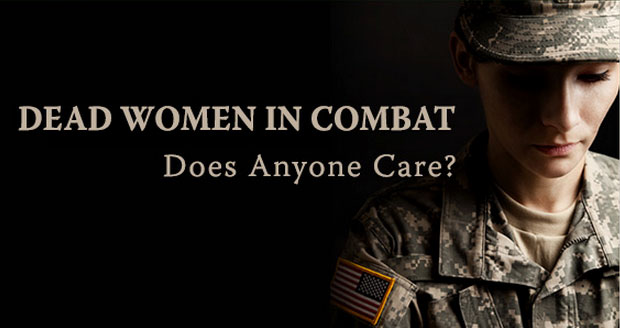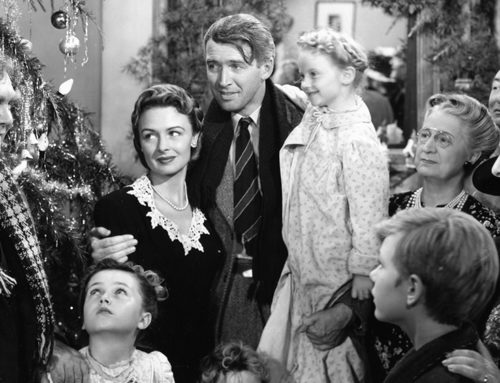Dead Women in Combat: Does Anyone Care? A Call for Americans to Cherish the Weaker Sex
Dead women—killed on the frontlines of combat—are no more a terrible sight to behold than dead men.
So declared General Martin Dempsey, Chairman of the Joint Chiefs of Staff, as he joined President Barack Obama and Secretary of Defense Leon Panetta in announcing a formal policy change on January 24 which removes the last restraints for women to serve in all active combat roles in the U.S. military. As part of a much-hyped and heralded public relations move by the current administration, Dempsey stated: “I’ve gone to Bethesda to visit wounded warriors, and I’ve gone to Arlington to bury our dead. There’s no distinction [between men and women].”1
As shocking as this may sound, it accurately reflects the changing attitudes of most Americans toward women in combat.
Our nation has had more than a decade to digest the horrors of our servicewomen being maimed, tortured, and killed in foreign wars, as the U.S. military has increasingly expanded the scenarios in which our female soldiers are placed in harm’s way. More than 150 female soldiers have died in Iraq and Afghanistan as a result, and servicewomen such as Jessica Lynch and Shoshana Johnson have been captured and suffered severe torture as prisoners of war.
Yet rather than respond in outrage, Americans have largely viewed the sufferings of women in combat as no different than the hard plight of “one of the boys.”
In 2004, the New York Times ran a cover story which featured a gruesome image of a wounded female soldier, blood running down her leg, with three men surrounding her, screaming. Rather callously, the Times titled the article, “A Routine Burst of Chaos Leaves a G.I. Wounded.” In writing the piece, journalist Dexter Filkins in no way keyed in on the fact that the wounded G.I. was a woman—he reported the story as if she had been any other male soldier hit by enemy fire.2
While this news article might be dismissed as liberal media bias, the majority of the American public is on board with our government’s recent decision to allow women to serve at the point of the spear in battle, where the brutalities of war are normally most fierce. According to a poll conducted by the Pew Research Center on Jan 24-27, 66% of Americans support lifting the combat ban for women, while only 26% oppose it.3
Retired U.S. Navy Captain Lory Manning made this startling yet astute observation on the tepid reaction Americans have shown to female soldiers being harmed in war: “Everyone expected a hue and cry when women started getting killed in combat, and it hasn’t happened. . . . The American public is ready to accept a greater number of female casualties in wartime.”4
The Law of the Innocents: Women Rescued from Combat Duty
Such apathy toward women in combat was considered appalling by past generations who embraced a Christian worldview. A powerful example of this occurred in Ireland at the close of seventh century A.D., when Adomnán—a Christian statesman, abbot of Iona, and biographer of Columba—denounced the placing of women on the frontlines of combat, promulgating a law to end this travesty.5
The war practice of unconverted clans in Ireland during this time was despicable. When they formed up for line of battle, husbands placed their wives directly in front of them on the field. Often carrying a baby with her in a pouch, the woman warrior was given a thirty-foot-long pole with an iron hook on the end which served as her weapon. If the woman hesitated to charge and fight in the heat of conflict, the husband flogged her back to prod her forward. When a woman soldier was killed in battle, her breasts were often severed by the enemy as a war prize.
Adomnán personally witnessed the mangled bodies of dead women warriors when he and his mother Ronnat visited a battlefield following a vicious encounter between two armies. A Medieval source records that “they saw nothing more touching and pitiful than the head of a woman in one place and the body in another, and her little babe upon the breasts of the corpse, a stream of milk upon one of its cheeks, and a stream of blood upon the other.”
Both Adomnán and his mother saw the dire need to intervene, with Ronnat giving her son this charge: “to thee henceforth it is given to free the women of the western world.” Compelled to action, Adomnán drafted “The Law of the Innocents” which was enacted at the Synod of Birr in the year 697, with ninety-one signatories from Ireland and Britain lending their support to the edict. Among other provisions, the law stipulated that if “women be employed in an assault or in a host or fight,” those in whose army they served were to be fined seven cumals (equivalent to the value of twenty-one milk cows) for each woman they compelled to take up arms in battle.
Adomnán’s legal reform was a masterstroke which led to women being protected in war, rather than exploited as the sacrificial first line of combat.
The Chivalric Code: Women Must Be Protected
As Christianity continued to transform Europe, codes of chivalry emerged which made the protection of women and the weaker members of society a chief aim. The Knights Codes of Chivalry, recorded in The Song of Roland, was adopted approximately one hundred years after Adomnán and is Europe’s first known chivalric code to be preserved. Of the seventeen tenets of this code, three require the aiding and protecting of women: (1) To protect the weak and defenceless; (2) To give succour to widows and orphans; (3) To respect the honor of women.
The codes of chivalry that followed this standard enacted during Charlemagne’s time incorporated similar provisions. The later Ordene de chevalerie, a widely popular French work which was likely composed before 1250, stipulated that knights “must honour all women and damsels and be ready to aid them to the limit of [their] power.”6
In the Medieval world, men—not women—took up arms and fought wars, while women were honored and protected as the weaker vessel. Rather than being placed on the frontlines of combat, they were secured behind the lines of battle to ensure their safety and well-being.
The Biblical Foundation: Men, Not Women, Go to War
The world of knights protecting fair maidens did not flow from a backwards, unenlightened romanticism, but was based squarely on the precepts and patterns found in God’s Word.
Scripture stipulates that men are to take up arms in combat, while women are to be shielded from the horrors of battle. A prime example of this is found in the Book of Joshua, when the Reubenites, Gadites, and half the tribe of Manasseh were called upon to help the other tribes conquer the land of Canaan, even as they were granted land beyond its boundaries, east of the Jordan River. Joshua’s directions to these three tribes make plain how a civilized people is to approach war:
Your wives, your little ones, and your cattle, shall remain in the land which Moses gave you on this side Jordan; but ye shall pass before your brethren armed, all the mighty men of valour, and help them (Joshua 1:14)
A census that Moses conducted a generation earlier illustrates that able men, not women, are to go to war:
Take ye the sum of all the congregation of the children of Israel, after their families, by the house of their fathers, with the number of their names, every male by their polls; From twenty years old and upward, all that are able to go forth to war in Israel: thou and Aaron shall number them by their armies. (Numbers 1:2-3)
The term “men of war” is used thirty-six times in the Bible and clearly indicates that those of the male rather than the female gender are to march in battle, as when Israel circled the walls of Jericho. “And ye shall compass the city, all ye men of war, and go round about the city once. Thus shalt thou do six days” (Joshua 6:3).
The Bible also provides examples of men taking steps to protect women when hostile parties threatened, with the men hazarding their lives on their behalf. One of the most poignant illustrations of this is found in the Book of Genesis, as Jacob was preparing to meet his brother Esau. Fearing that Esau’s band would slaughter “the mother with the children” (Genesis 32:11), Jacob positioned his wives and young ones to the rear of his party, while he lead from the front (Genesis 33:1-3).
The most significant example of all time of male sacrifice for women was modeled by Jesus Christ, the Second Person of the Trinity. Jesus suffered the scourge of torture, humiliation, and ultimately death to save His bride, the Church, and men in all ages are admonished to follow His lead (Ephesians 5:25).
America the Barbarous: A Call to Repentance
Our nation’s abandonment of biblical principles has led women to be devalued rather than cherished. As opposed to reacting with shame and outrage at the prospect of women facing the horrors of frontline combat, as Adomnán did 1,300 years ago, the majority of Americans are celebrating the placement of our sisters and daughters in the heat of battle as a triumph of women’s rights. Far from being “enlightened” concerning warfare, twentieth-first century America has become a nation of barbarians.
President’s Obama’s words—made on the day his administration announced that hundreds of thousands of combat roles would be opened for women—reflect the attitude of much of our nation’s populous: “Today, every American can be proud that our military will grow even stronger with our mothers, wives, sisters and daughters playing a greater role in protecting this country we love.”9
What should be sounding instead is a lament. The weeping prophet Jeremiah offers mournful words fit for the occasion: “Mine eye runneth down with rivers of water for the destruction of the daughter of my people. Mine eye trickleth down, and ceaseth not, without any intermission . . .” (Lamentations 3:48-49).
While all life is precious in God’s sight, we have erred in concluding that the death of G.I. Jane in combat is no more terrible than the death of G.I. Joe. Women should not be placed in harm’s way to defend our nation, and rather than celebrate what should be mourned, we should cry out to God to humble our hearts in repentance.
Only then will the scales be lifted from our eyes and our hearts be made tender to protect the weaker sex.
Footnotes
- Chris Good, Mary Bruce, and Luis Martinez, “Military Warned to Maintain Readiness as Women Move Toward Combat,” ABCNews.com, January 24, 2013.
- Dexter Filkins,“A Routine Burst of Chaos Leaves a G.I. Wounded,” New York Times, May 26, 2004.
- “Broad Support for Combat Roles for Women,” Pew Research Center, released January 29, 2013.
- David S. Cloud and Tony Perry, “Military to lift ban on women in combat,” Los Angeles Times, January 23, 2013.
- This discussion of Adomnán’s reforms is derived from original Medieval sources as recorded in: the Kuno Meyer, Editor and Translator, Medieval Sourcebook: Cain Adamnain: An Old-Irish Treatise on the Law of Adamnan (Oxford: Clarendon Press, 1905).
- Maurice Keen, Chivalry, originally published in 1984 by Yale University. Citation taken from the Folio Society’s deluxe edition (London: The Folio Society, 2010), pp. 7-10.
- David Jackson, “Obama backs women in combat,” USA Today, January 24, 2013. 7In last week’s State of the Union address, the President took the occasion to trumpet this policy change to an estimated 33.5 million viewers, stating that “our sisters and daughters . . . are ready for combat.”8President A full transcript of Obama’s 2013 State of the Union Address can be accessed here







[…] So declared General Martin Dempsey, Chairman of the Joint Chiefs of Staff, as he joined President Barack Obama and Secretary of Defense Leon Panetta in announcing a formal policy change on January 24 which removes the last restraints for women to serve in all active combat roles in the U.S. military. As part of a much-hyped and heralded public relations move by the current administration, Dempsey stated: “I’ve gone to Bethesda to visit wounded warriors, and I’ve gone to Arlington to bury our dead. There’s no distinction [between men and women].”1 […]